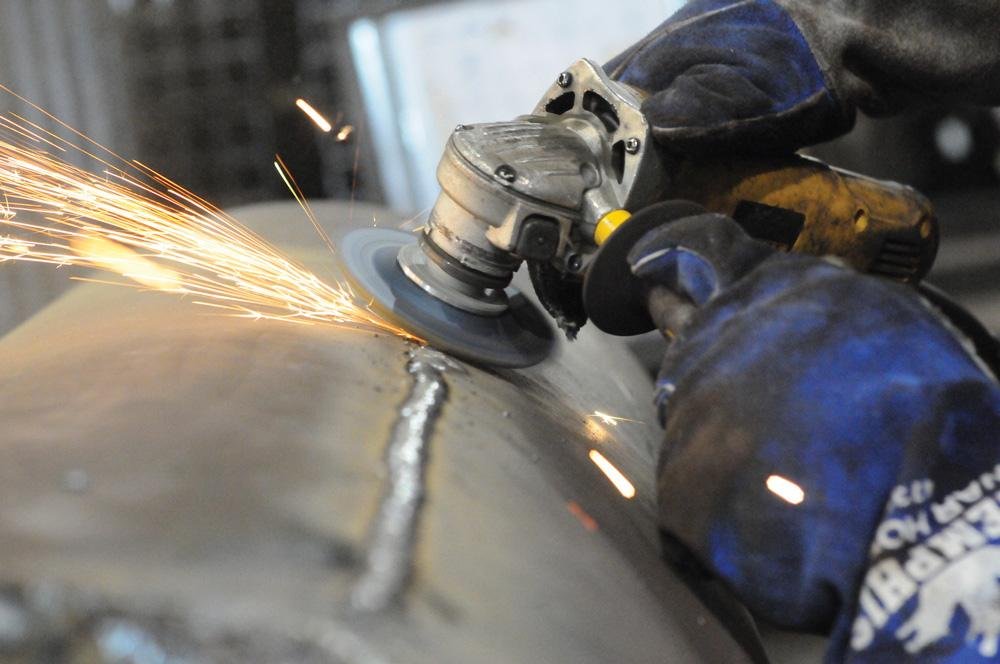Rust and old paint don’t stand a chance against the right wire wheel. But not all wire wheels are created equal, and using the wrong one can lead to wasted time, frustration, or even damage to your surface. So what separates a truly effective wire wheel from one that just spins and scratches?
It Starts with the Wire Type
The type of wire used on the wheel makes a major difference in how it performs. There are three common types, and each serves a different purpose.
- Crimped wire – Crimped wire wheels Newcastle are the most flexible option. The wires are wavy and slightly bent, which means they give a softer touch. That’s ideal for light rust or thin paint, and it’s safer on more delicate metal surfaces. Crimped wire wheels are good when you want to clean without grinding too deep.
- Knotted (or twisted) wire – These are much more aggressive. The wires are twisted into tight bundles, which gives them the strength to dig into thick rust or layers of old paint. If the surface is tough and the corrosion is deep, a knotted wire wheel will get the job done faster.
- Straight wire – Less common but sometimes useful. Straight wire wheels use stiff, unbent wires for high-impact brushing. They’re not as forgiving, so they’re best reserved for heavy-duty jobs where finish quality isn’t the top priority.
Choosing the right type of wire depends on your surface, the level of corrosion, and how much material you want to remove.
Wire Thickness Matters Too
The thickness (or gauge) of the wire affects how it behaves during use.
Thicker wires – More aggressive, longer-lasting, and better for heavy jobs. They won’t flex as much, so they keep a firm pressure on the surface.
Thinner wires – More flexible and better for detail work. They conform to curves and irregularities, which helps avoid gouging softer metals.
An effective wire wheel balances wire strength with enough flexibility to handle the shape and hardness of the surface you’re working on.
Wheel Shape Plays a Role
There’s more than one type of wire wheel. And yes, shape definitely matters.
Cup brush
This type has wires that extend straight out from a cup-shaped base. It covers a wide area quickly and works best on flat, open surfaces. For removing rust or paint from sheet metal, steel plates, or large tools, the cup brush is a strong choice.
Wire wheel (face brush)
This is your classic wheel, with wires projecting outward from the edge of a disc. Ideal for edges, corners, and uneven surfaces. It works well where precision is important, like cleaning welds or tight spaces.
End brush
Designed for detailed work, this narrow, compact brush is perfect for hard-to-reach areas like holes, joints, or interior corners. It is not a primary brush, but it is useful for finishing touches.
An effective setup usually includes more than one wheel shape. Using the right one for each part of the job makes the process smoother and faster.
Speed and Tool Compatibility
A wire wheel needs to match your tool. Speed ratings matter. If a wheel isn’t rated for the RPM of your grinder or drill, it can break apart under pressure. That’s dangerous and totally avoidable.
Always check the RPM rating on the wheel, the tool’s maximum speed, and the arbor size (so the wheel fits securely). An effective wire wheel setup doesn’t just work well, it works safely.
Surface Preparation and Consistency
What sets a great wire wheel apart isn’t just how quickly it strips rust or paint, but how well it leaves the surface afterwards. A good wheel should clean without damaging the base material. It should create an even finish, free from deep scratches or burn marks.
Wheels that shed wires quickly or skip over rust patches aren’t doing the job properly. High-quality wire wheels maintain contact, hold their shape, and stay balanced during use. That means more consistent results with less effort.
Durability Saves Time and Money
Wire wheels wear down over time, but some last longer than others. Cheaper ones often have wires that break or fall out after limited use. That can lead to uneven cleaning and wasted money on replacements.
Signs of an effective, durable wire wheel:
- It holds its shape over repeated use
- The wires don’t fray or snap easily
- It doesn’t wobble or shake when spinning
Spending a bit more on quality often pays off with better results and a longer working life.
When It’s Worth Switching
There are jobs where a wire wheel just isn’t the best tool. For example, if the rust has completely pitted the metal, or if the paint is deeply embedded in texture, other methods like sanding or blasting might be more effective. But for most surface rust, flaking paint, or oxidised coatings, a wire wheel is fast, affordable, and efficient.
Final Thoughts: Choose Smart, Not Just Fast
An effective wire wheel doesn’t just tear through rust and paint. It does the job cleanly, safely, and without damaging your work surface. Choosing the right wire type, shape, thickness, and matching it properly to your tool makes all the difference.
It’s not about grabbing the most aggressive wheel and going full speed. It’s about knowing what you’re working with, choosing the right wheel for the task, and using it with care and precision. When you get that right, rust and paint removal becomes a smooth, controlled process.







